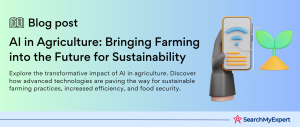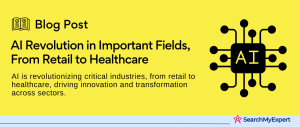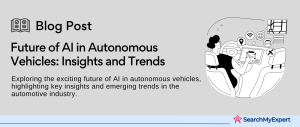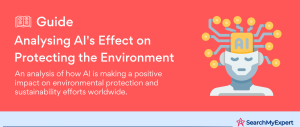The Convergence of AI and Robotics: A Modern Marvel
Understanding AI and Robotics
In today’s rapidly evolving technological landscape, two fields have consistently garnered significant attention and investment: Artificial Intelligence (AI) and Robotics. Artificial Intelligence, at its core, is a branch of computer science that aims to create machines capable of intelligent behavior. This encompasses a broad range of capabilities, from basic problem-solving and pattern recognition to the more complex tasks of learning, adaptation, and decision-making. AI systems are designed to mimic human cognitive functions, making them an invaluable tool in various sectors.
Robotics, on the other hand, involves the design, construction, operation, and use of robots. Robots are programmable machines that can carry out a series of actions autonomously or semi-autonomously. Traditionally, robotics focused on the mechanical and electrical engineering aspects of these machines, ensuring their physical functionality and efficiency.
The Convergence: AI Meets Robotics
The convergence of AI and Robotics is not just a merging of two distinct fields but a transformative synergy that is reshaping how we interact with technology and the world around us. This integration is born out of necessity and innovation – the necessity to enhance the capabilities of robots beyond mere mechanical tasks, and the innovation provided by AI to make this possible. AI brings the ‘brain’ to robotics, enabling these machines to process information, learn from experiences, and make decisions based on data rather than just pre-programmed instructions.
This convergence is significant for several reasons:
- Enhanced Capabilities:
AI-infused robots can perceive their environment, interpret data, and make informed decisions. This allows them to perform complex tasks that were previously unachievable by traditional robots. - Increased Efficiency and Productivity: In industrial and manufacturing settings, AI-driven robots can optimize processes, reduce errors, and save time, translating to increased productivity and efficiency.
- Adaptability:
AI enables robots to adapt to new tasks and environments through learning algorithms. This flexibility is crucial in dynamic sectors like healthcare, space exploration, and disaster management. - Human-Robot Collaboration: AI-driven robots can work alongside humans more effectively, understanding and responding to human actions and instructions, which leads to safer and more productive human-robot collaborations.
- Problem-Solving in Complex Environments: In scenarios like deep-sea exploration or space missions, AI-powered robots can navigate and operate in environments that are inaccessible or hazardous to humans.
The Significance of AI in Robotics
The role of AI in robotics cannot be overstated. It is the cornerstone that transforms a mechanical device into an intelligent agent capable of autonomous decision-making and problem-solving. Some key areas where AI significantly impacts robotics include:
- Machine Learning and Adaptation:
AI enables robots to learn from their experiences, adapt to new challenges, and improve their performance over time without explicit programming. - Computer Vision:
Through AI, robots can interpret and understand visual information from the world around them, which is crucial for tasks like object recognition, navigation, and manipulation. - Natural Language Processing (NLP):
AI allows robots to understand and respond to human language, facilitating smoother and more natural interactions between humans and robots. - Autonomous Navigation:
AI-driven robots can navigate complex environments, making real-time decisions based on sensory input, which is essential for applications like autonomous vehicles and drones. - Predictive Maintenance: In industrial settings, AI enables robots to predict and identify potential maintenance issues before they occur, reducing downtime and maintenance costs.
AI-Powered Perception and Sensing in Robotics
The Role of Sensors in Robotics
Robots, much like humans, rely on their ‘senses’ to interact with the world around them. These senses are facilitated by various sensors that allow robots to perceive their environment. The most common types of sensors used in robotics include cameras, LiDAR (Light Detection and Ranging), and radar, each serving a unique function:
- Cameras: These are akin to the human eye, providing visual information about the environment. Cameras in robotics range from simple digital cameras to sophisticated 3D vision systems. They capture images and videos which are then processed to identify objects, gauge distances, and understand the environment.
- LiDAR: This sensor uses laser light to measure distances and create high-resolution maps of the surrounding area. LiDAR is particularly effective in determining the shape and size of objects, and it plays a crucial role in autonomous vehicle navigation, providing detailed information about the vehicle’s surroundings.
- Radar: Radar sensors emit radio waves and analyze the reflected signals. They are particularly useful in detecting the distance, speed, and angle of objects, even under adverse weather conditions. Radar is widely used in automotive applications, especially for adaptive cruise control and collision avoidance systems.
AI Algorithms: Processing and Interpreting Sensor Data
The raw data collected by these sensors is intricate and voluminous. This is where AI algorithms come into play, processing and interpreting this data to make sense of the environment. AI uses a variety of techniques such as machine learning, pattern recognition, and computer vision to analyze sensor data. The process involves:
- Data Preprocessing: Raw data from sensors can be noisy and unstructured. AI algorithms preprocess this data, filtering out noise and converting it into a format suitable for further analysis.
- Feature Extraction:
AI algorithms identify and extract relevant features from the preprocessed data. For instance, in image data from cameras, features might include edges, textures, or specific shapes. - Data Analysis:
The extracted features are then analyzed to understand the environment. Machine learning models, especially neural networks, are adept at processing large amounts of data and identifying patterns. - Decision Making: Based on the analysis, the AI system makes decisions. For example, in an autonomous vehicle, the AI might decide whether to stop, slow down, or steer to avoid an obstacle.
Examples of AI-Powered Perception Tasks in Robots
- Object Recognition:
One of the primary perception tasks for robots is recognizing and identifying objects. AI algorithms analyze images from cameras, cross-referencing them with vast databases to identify objects. This is crucial in various applications, from industrial robots picking and placing objects to autonomous cars identifying traffic signs. - Obstacle Avoidance: For any mobile robot, avoiding obstacles is fundamental. AI algorithms process data from sensors like LiDAR and radar to detect obstacles and plan a collision-free path. This is critical in applications ranging from domestic robots navigating around furniture to drones avoiding trees in forested areas.
- Navigation:
AI-powered robots can navigate through complex environments using sensor data. For instance, autonomous vehicles combine data from cameras, LiDAR, and radar to map their environment, locate themselves within it, and plan routes to their destinations.
AI-Driven Control and Decision Making in Robotics
AI Algorithms in Controlling Robot Movements
The seamless movements and actions of robots, which often mimic or surpass human capabilities, are predominantly driven by advanced AI algorithms. These algorithms are the ‘brain’ behind the robot’s mechanical ‘body’, enabling it to execute tasks with precision and adaptability. The control of robot movements involves several key AI-driven processes:
- Motion Planning: AI algorithms determine the sequence of movements needed to accomplish a specific task. This includes calculating trajectories and ensuring movements are efficient and collision-free.
- Kinematic and Dynamic Analysis: AI helps in understanding and applying the laws of physics to robot movement, ensuring that actions are physically feasible and efficient.
- Feedback Loops:
AI algorithms continuously monitor and adjust the robot’s movements in real-time, using feedback from sensors to correct any deviations from the intended path or action. - Coordination and Synchronization: In scenarios involving multiple robots or collaborative tasks with humans, AI is crucial for coordinating movements and ensuring synchronization.
Different AI Approaches for Robot Decision-Making
Robot decision-making is a complex process that involves selecting the best course of action based on sensory input and predetermined goals. AI provides several approaches to enhance this decision-making process:
- Planning Algorithms: AI planning algorithms enable robots to map out a series of actions to achieve a specific goal. This is essential in complex tasks where multiple steps are involved, and the outcome of one action affects subsequent actions.
- Reinforcement Learning (RL):
RL is a type of machine learning where robots learn to make decisions through trial and error. They receive feedback in the form of rewards or penalties and use this to refine their decision-making process. This approach is particularly useful in dynamic environments where predefined rules may not always apply. - Reactive Control:
This approach focuses on real-time responses to environmental changes. AI-driven reactive control systems enable robots to quickly adapt to new stimuli, ensuring timely and appropriate actions without the need for extensive pre-planning.
Examples of AI-Powered Control Tasks in Robots
The application of AI in controlling and decision-making processes of robots can be observed in various tasks:
- Autonomous Navigation:
One of the most advanced applications of AI in robotics is autonomous navigation, as seen in self-driving cars and autonomous drones. These robots use AI to process sensor data, plan routes, and make real-time decisions to navigate through their environment safely. - Grasping and Manipulation:
AI algorithms enable robotic arms to perform complex manipulation tasks, such as grasping different objects. This involves intricate perception, planning, and control to adjust the grip based on the object’s size, shape, and weight. - Adaptive Behavior in Complex Environments:
AI-driven robots can adapt their behavior based on environmental changes. For instance, a search and rescue robot may alter its path and actions in response to new obstacles or discoveries.
Learning and Adaptation in AI-Powered Robotics
The Foundation of Robot Learning
The ability of robots to learn from data and adapt their behavior over time is a cornerstone of modern robotics. This capability is made possible through various AI techniques that enable robots to analyze data, identify patterns, and make informed decisions. Learning and adaptation in robotics are not just about programming robots to perform tasks; it’s about empowering them to improve their skills and adapt to new challenges autonomously.
AI Techniques for Robot Learning
- Machine Learning (ML):
ML is a subset of AI that focuses on enabling machines to learn from data and improve their performance over time. In robotics, ML algorithms help in tasks like pattern recognition, decision-making, and predictive modeling. These algorithms analyze data from the robot’s interactions with its environment and use it to refine their decision-making processes. - Deep Learning (DL):
A more complex subset of ML, DL uses neural networks with many layers (hence ‘deep’) to process data. This technique is particularly effective in handling large and complex datasets, like those from high-resolution sensors in robotics. Deep learning is instrumental in tasks that involve image and speech recognition, which are crucial for advanced robotic functions.
AI-Powered Learning Tasks in Robots
The application of these AI techniques in robotics has led to significant advancements in various tasks:
- Improving Navigation Accuracy:
One of the most critical areas in robotics is navigation. Through ML and DL, robots can continuously improve their navigation skills by learning from past experiences. For example, autonomous vehicles use data from past trips to optimize their route planning and obstacle avoidance strategies, thereby enhancing safety and efficiency. - Optimizing Manipulation Skills:
In industrial robotics, precision and efficiency in manipulation tasks are vital. AI-powered robots can learn from each task they perform, refining their movements to improve accuracy and speed. This learning capability is particularly beneficial in assembly lines where robots are required to handle a variety of objects with different shapes and sizes. - Personalizing Behavior:
In service and companion robots, personalization is key. These robots use AI to learn from interactions with humans and adapt their behavior accordingly. For instance, a companion robot can learn to recognize the preferences and habits of its user and modify its actions to better suit their needs.
Enhancing Human-Robot Interaction Through AI
The field of human-robot interaction (HRI) has undergone a transformative evolution, largely driven by advancements in artificial intelligence (AI). The goal of HRI is to create robots that can work alongside humans efficiently, safely, and in a manner that feels natural. AI plays a crucial role in achieving this by enabling robots to understand, interpret, and respond to human cues, whether they are verbal, physical, or emotional.
AI Approaches for Human-Robot Interaction
- Speech Recognition:
This involves the ability of a robot to understand spoken language. Advanced AI models are trained on vast datasets to recognize various speech patterns, accents, and languages. This allows robots to respond to voice commands, making interaction more intuitive for users. - Natural Language Processing (NLP):
NLP goes beyond mere speech recognition to understand the context and semantics of human language. This enables robots to engage in more meaningful conversations, interpret requests accurately, and provide relevant responses. - Gesture Recognition:
AI also empowers robots to interpret human gestures, an important aspect of non-verbal communication. Using sensors and AI algorithms, robots can recognize and respond to a range of gestures, enhancing their ability to interact in a more human-like manner.
Examples of AI-Powered Human-Robot Interaction Tasks
- Voice-Controlled Robots:
These robots can be operated through voice commands, making them accessible and easy to use. This is particularly beneficial in scenarios where hands-free operation is necessary, such as for individuals with mobility issues or in environments where manual interaction is impractical. - Collaborative Robots (Cobots): Cobots are designed to work alongside humans in a shared workspace. AI enables these robots to understand and predict human actions, ensuring safety and enhancing efficiency. In industrial settings, cobots can assist workers with tasks that are repetitive, heavy, or dangerous.
- Robot Companions:
AI-driven robot companions are increasingly used in healthcare and eldercare for social interaction and assistance. These robots can engage in conversations, learn individual preferences, and provide company, thus enhancing the quality of life for individuals who may be isolated.
The Future of Human-Robot Interaction
The integration of AI into HRI signifies a shift towards more empathetic and effective interactions between humans and robots. With continuous advancements in AI, the future of HRI holds immense potential:
- Emotion Recognition and Response:
Future robots could be capable of recognizing human emotions and adjusting their responses accordingly, making interactions more empathetic and personalized. - Enhanced Learning Capabilities:
Robots will continue to improve their understanding of human behavior and preferences through advanced learning algorithms, allowing for more customized and responsive interactions. - Seamless Integration into Daily Life:
As robots become more adept at understanding and interacting with humans, they will seamlessly integrate into various aspects of daily life, from assisting in homes to collaborating in workplaces.
The Far-Reaching Applications and Impact of AI in Robotics
The integration of Artificial Intelligence (AI) into robotics has revolutionized not just the technology itself, but also its applications across various industries. This fusion is not only reshaping industry landscapes but also bringing about significant societal and economic impacts. However, it’s equally important to address the ethical considerations and challenges associated with this advancement.
Diverse Applications of AI in Robotics Across Industries
- Manufacturing:
In manufacturing, AI-powered robots are enhancing efficiency, productivity, and safety. These robots can work tirelessly, handle dangerous tasks, and perform precise operations, leading to increased output and reduced human error. From automotive assembly lines to electronics manufacturing, AI robots are indispensable for their precision and efficiency. - Healthcare:
In healthcare, robots are assisting in surgeries, enabling precision and control beyond human capabilities. They are also used for patient care, such as in rehabilitation or elderly care, offering assistance and companionship. AI-driven robots are revolutionizing drug discovery and diagnostics, speeding up the process and increasing accuracy. - Logistics and Supply Chain: AI in robotics is transforming logistics through automated warehouses and intelligent delivery systems. Robots in this sector can sort, pack, and transport goods more efficiently, managing the increasing demands of e-commerce and reducing the margin of error in inventory management.
Potential Societal and Economic Impact
- Job Creation and Displacement:
While AI in robotics is creating new job opportunities in tech and engineering, it also poses the risk of displacing workers in sectors heavily reliant on manual labor. This necessitates a focus on retraining and education to prepare the workforce for a changing job landscape. - Increased Productivity: AI robots contribute significantly to productivity, capable of operating 24/7 and handling tasks beyond human endurance. This can lead to economic growth, as businesses can produce more goods and services efficiently.
- Improved Quality of Life:
Robots can take over mundane or dangerous tasks, allowing humans to engage in more creative and less hazardous work. In healthcare, AI-powered robots improve patient care, while in everyday life, they can offer convenience and assistance.
Ethical Considerations and Challenges
- Privacy and Security:
The use of AI in robotics raises concerns about data privacy and security. Robots collect vast amounts of data, and ensuring this data is protected and used ethically is crucial. - Bias and Fairness: AI algorithms can inherit biases from their training data, leading to unfair or unethical outcomes. Ensuring AI in robotics is free from biases and operates fairly is a significant challenge.
- Accountability: Determining accountability in decisions made by AI robots is complex. Clear guidelines and regulations are needed to address issues of liability, especially in high-stakes areas like healthcare and autonomous vehicles.
- Human Dependency:
As robots become more integrated into daily life, there’s a risk of increased human dependency on these machines, raising questions about the loss of skills and autonomy. - Societal Impact:
The widespread use of AI robots can lead to societal changes, including shifts in employment, lifestyle, and even social interactions. Navigating these changes responsibly is a key challenge.
Navigating the Horizon: Future Trends and Outlook in AI Robotics
As we delve into the future of Artificial Intelligence (AI) in Robotics, it’s evident that we are on the cusp of a technological renaissance. Emerging trends and technologies are shaping a future where AI-powered robots will play an even more integral role in our lives and society. Let’s explore these advancements and consider the long-term vision for these intelligent machines.
Emerging Trends and Technologies in AI Robotics
- Neuromorphic Computing:
This cutting-edge technology mimics the neural structure of the human brain, promising to revolutionize AI’s efficiency and processing power. Neuromorphic computing enables robots to process information more rapidly and make decisions more efficiently, which is especially beneficial for tasks requiring real-time analysis. - Embodied AI:
This approach integrates AI into physical robotic bodies, allowing robots to learn from physical interactions with the world. Embodied AI leads to more natural and intuitive interactions between humans and robots and enhances the robot’s understanding of its environment. - Swarm Robotics: Inspired by the collective behavior of natural systems like ant colonies or bird flocks, swarm robotics involves groups of robots working collaboratively to achieve a common goal. This approach could revolutionize areas like search and rescue operations, agriculture, and environmental monitoring.
- Human-Augmentation Robotics: These technologies aim to enhance human capabilities, whether through exoskeletons that provide superhuman strength or implantable chips that enhance cognitive abilities. This trend is particularly promising for healthcare and rehabilitation.
- Eco-Friendly and Sustainable Robotics: With increasing environmental concerns, the development of eco-friendly and sustainable robots is gaining traction. These robots are designed to be energy-efficient, made from sustainable materials, and employed in tasks like environmental monitoring and cleanup.
Long-term Vision for AI-Powered Robots
The long-term vision for AI-powered robots is one of harmony and coexistence with humans, where robots not only augment human capabilities but also contribute positively to societal advancements:
- Enhanced Human-Robot Collaboration:
Future robots are expected to work alongside humans seamlessly, whether in industrial, domestic, or public spaces. This collaboration will be driven by advancements in understanding human behavior and communication. - Accessibility and Inclusivity:
AI-powered robots hold the promise of creating more accessible and inclusive environments, assisting individuals with disabilities, and offering personalized support in healthcare and daily living. - Societal Impact and Ethical Development:
As robots become more ingrained in society, their development will increasingly focus on ethical and societal impacts. This includes addressing issues of job displacement, privacy, and ensuring the benefits of robotic technology are accessible to all sections of society. - Autonomous Decision-Making:
Future AI robots will have more autonomy in decision-making, but this will be balanced with ethical frameworks and human oversight to ensure responsible and beneficial outcomes. - Interdisciplinary Integration:
The future of AI robotics lies in the integration of various scientific and technological disciplines, fostering innovations that are more holistic and impactful.
Conclusion
The integration of Artificial Intelligence (AI) into robotics heralds a new era of technological innovation and societal transformation. This journey from AI-enhanced perception and decision-making to advanced human-robot interaction signifies a major leap in our ability to develop machines that not only assist but also enrich our lives. The diverse applications across various sectors, including manufacturing, healthcare, and logistics, underscore the versatility and impact of these technologies.
Emerging trends such as neuromorphic computing, embodied AI, and eco-friendly robotics are paving the way for a future where robots are not only more efficient and capable but also more in tune with environmental and societal needs. The long-term vision for AI-powered robots is one of symbiosis with humanity, where robots augment human abilities and contribute to the greater good.
Craft the future of tech with our Artificial Intelligence Company.
Table of Contents
Toggle






